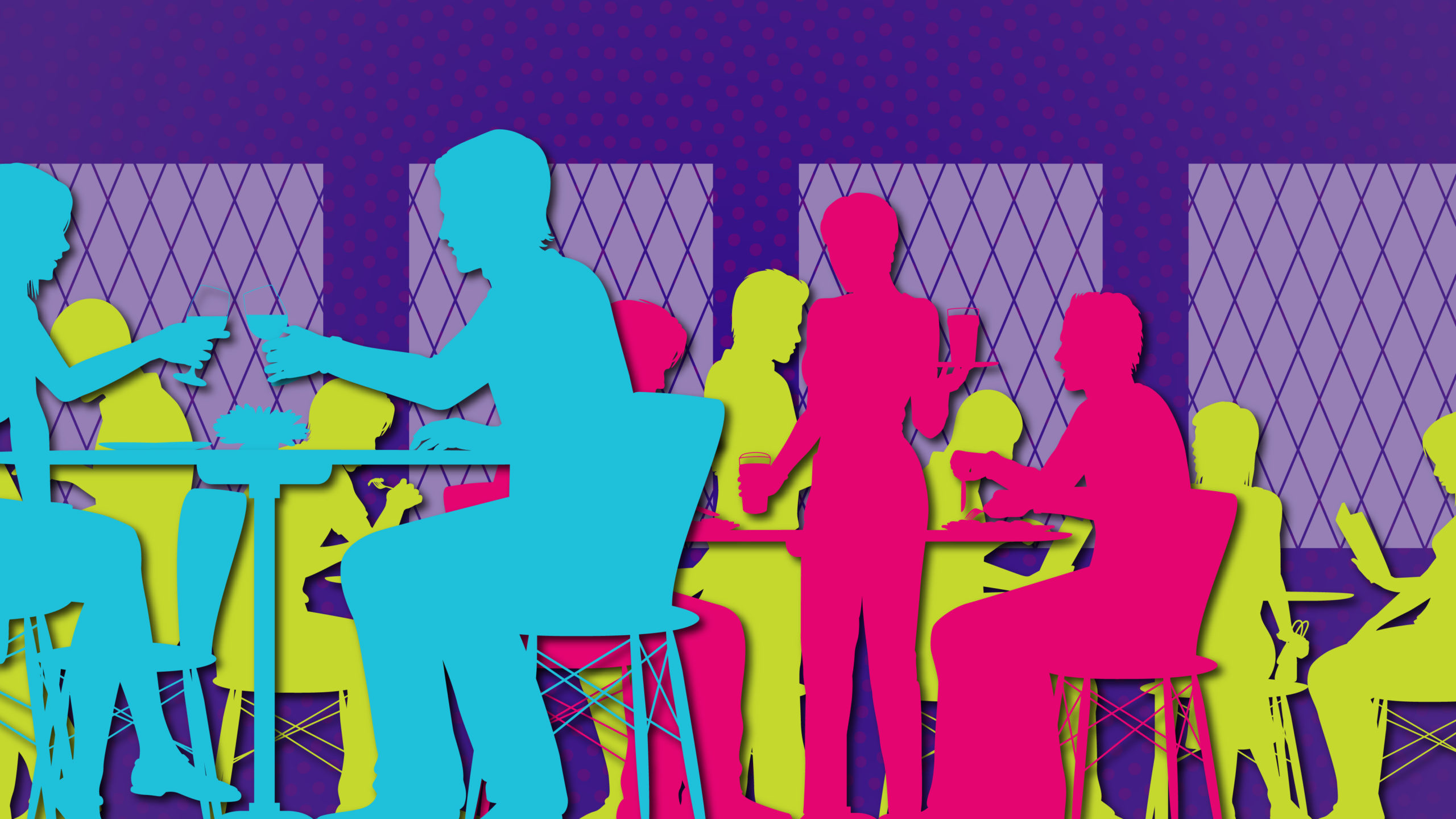Do you remember restaurants?
Recently, a car insurance company has been running some ingenious radio (yes, I still listen to the radio) ads consisting of a short tagline and a sampling of ambient noise from familiar places. The campaign, titled “Sounds of the Old World,” focuses on the places and experiences that we took for granted in a pre-COVID world. My favorite ad in the series features a 10-second flashback of a busy restaurant. Conversation and the clanging of glassware dominate the soundscape. For that 10 seconds, you are transported back to what seems like a simpler time—and are filled with hope to someday (hopefully soon) return to your favorite spot for dinner and drinks with friends.
This ad left me thinking: What was it about “the old world” that left me longing to return and experience it again? That’s when I realized it was that emotional connection paired with the strong memories that were associated with it that left me craving more. The same concept can be applied to eLearning.
As our teams have become busier, the terms “microlearning” or “bite-sized” have been brought up more and more—so much so that there are many who consider this “the way of the future.” This is simply not true—or at least it shouldn’t be.
As our teams have become busier, the terms “microlearning” or “bite-sized” have been brought up more and more—so much so that there are many who consider this “the way of the future.” This is simply not true—or at least it shouldn’t be.
While the tools to deliver content to users have improved, and we as learning professionals can reach more users than ever before, we still need to consider the needs of our users before anything else. This will allow us to ensure we are delivering the right content, at the right depth, at the right time.
Sure, microlearning (any training that is focused upon one learning objective and can be completed in under 10 minutes) has its place in our busy lives. There will always be a need for one- to two-minute videos on how to assemble the newest piece of IKEA furniture, job aids will always help refresh and sustain the processes we follow, and FAQ sections will continue to provide answers to our burning questions. Before committing to one of these “grab-and-go” style learning modalities, should we consider a relic from the old world—the “entrée” version of a deep and meaningful experience?
Capitalizing on Emotion
Creating an emotional and motivational experience doesn’t require a 60-minute module that covers 20 different learning objectives. Fifteen minutes may be enough to get the job done. By tapping into our users’ emotions, we can not only grab their attention, but also create a compelling case for applying what we are asking them to learn. This becomes more important when we consider that over 51% of the workforce is disengaged while at work.1 Is it reasonable to expect our teams to embrace new skills or information if they don’t really care about it? The simple answer is no.
Our teams are busy—I get that. But in a world where we are all bombarded with emails, meeting invites, and instant messages, don’t you think learners would like to take a break from the chaos? Wouldn’t they like devote their short window of free time (24 minutes per week on average2) to learning something meaningful?
Creating an emotional and motivational experience doesn’t require a 60-minute module that covers five different learning objectives. Fifteen minutes may be enough to get the job done.
A recent study found that nearly 74% percent of learners are eager to learn and develop new skills.3 Let’s be honest, a learner can’t understand the context, explore the content, practice a new skill, and identify how to apply it to their daily lives (Whoa—there’s five objectives right there!) in under 10 minutes. Our users require more. They deserve more.
I’ll leave you with a challenge. The next time you are creating a learning experience, ask yourself, “Is this something that requires an emotional connection to sustain it?” If the answer is yes, consider going retro and build an experience that users can engage with and create something memorable that they can return to again and again.






